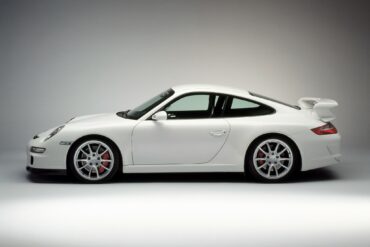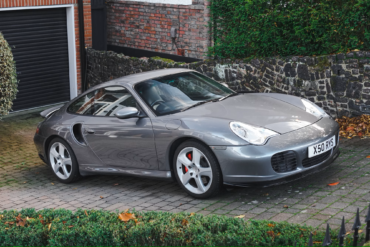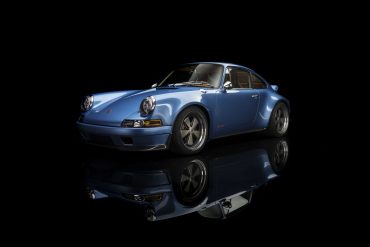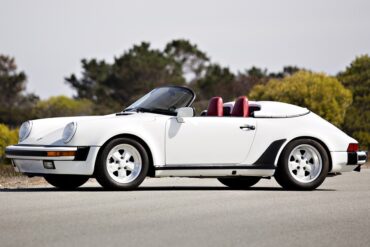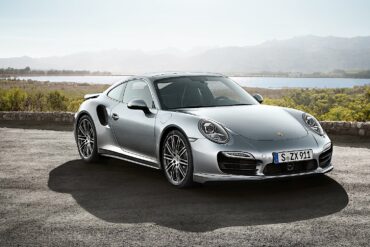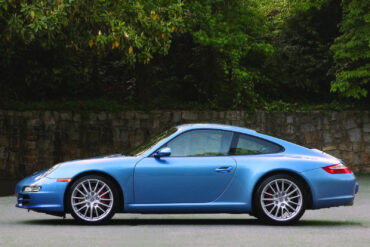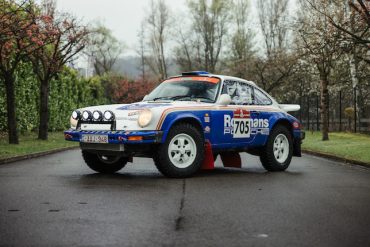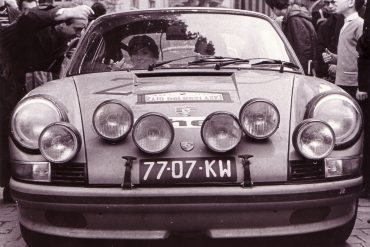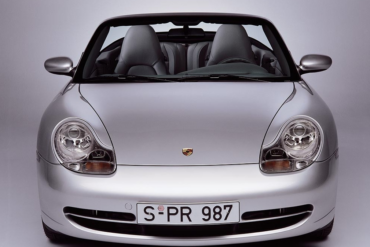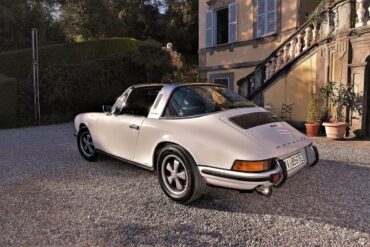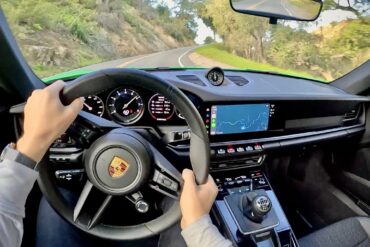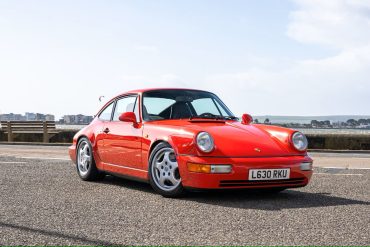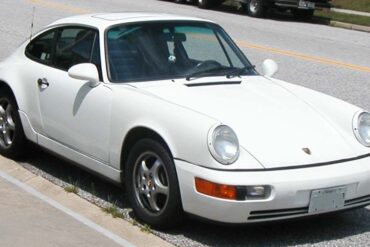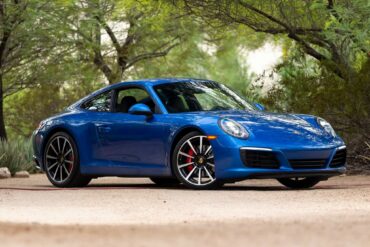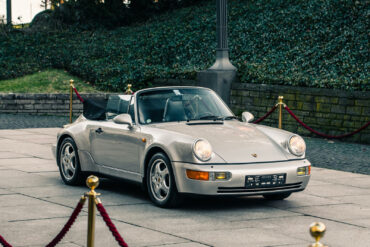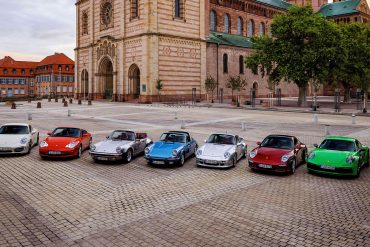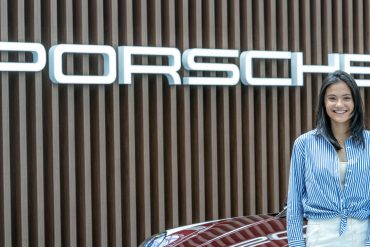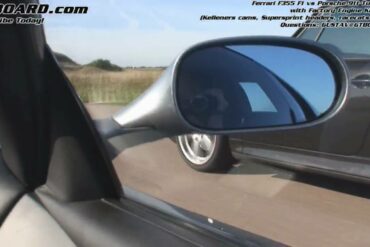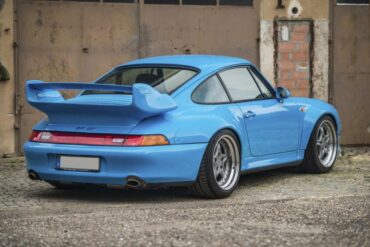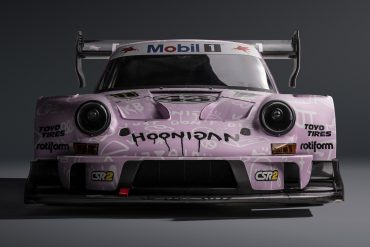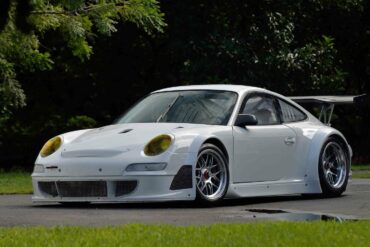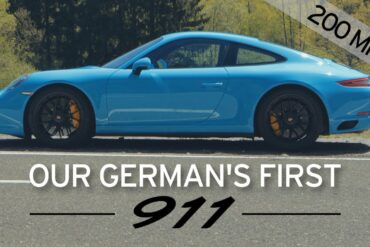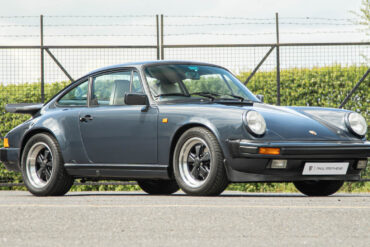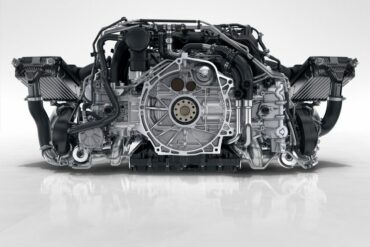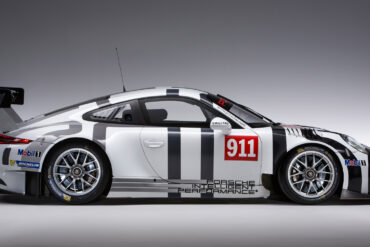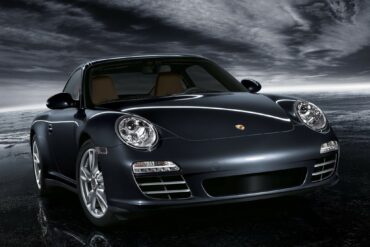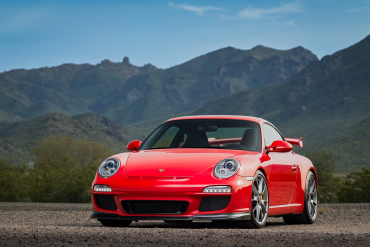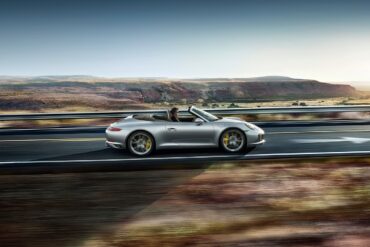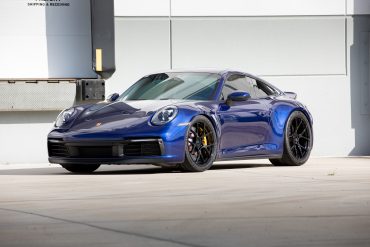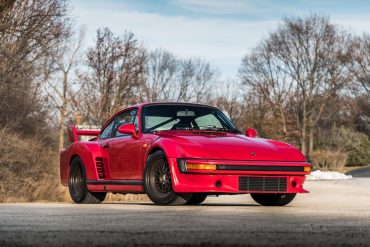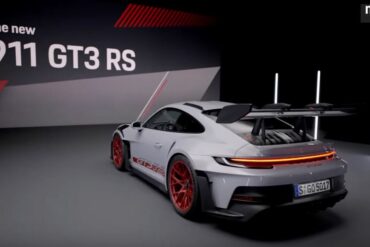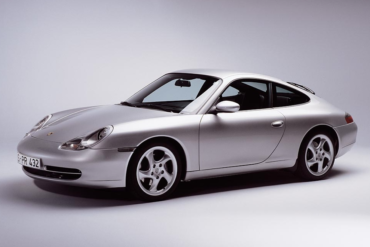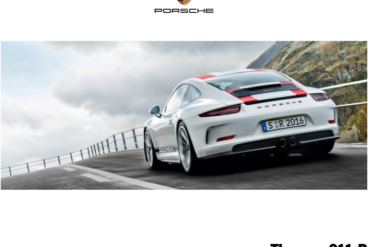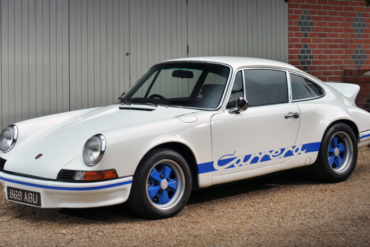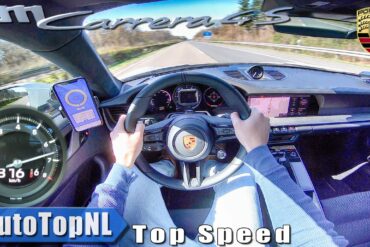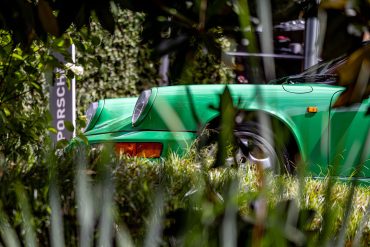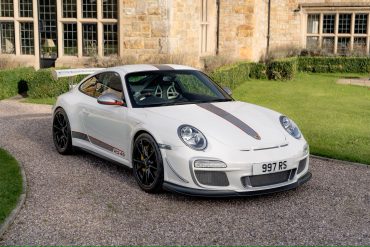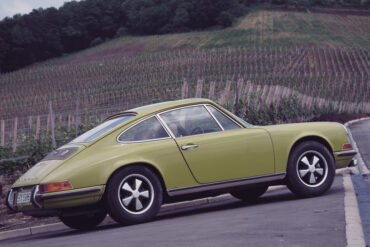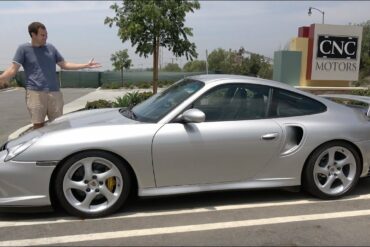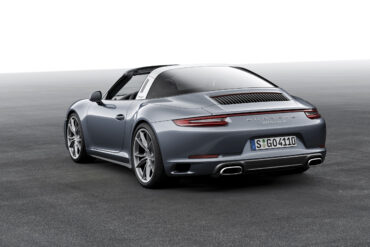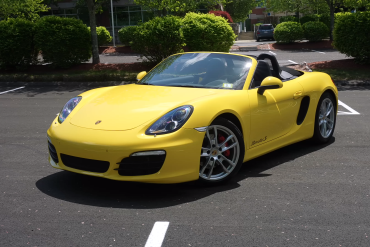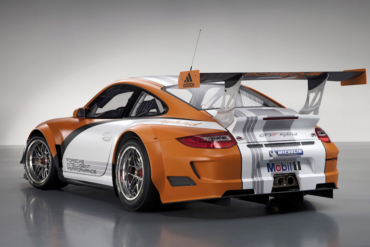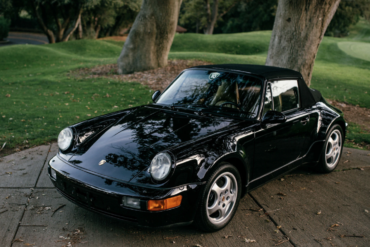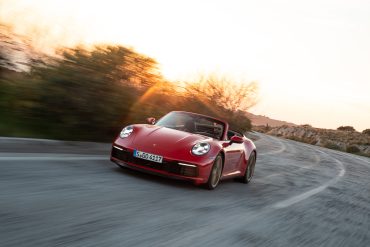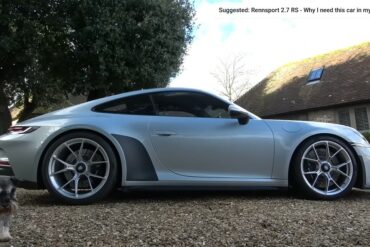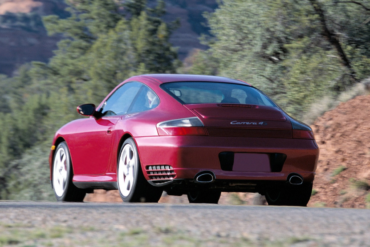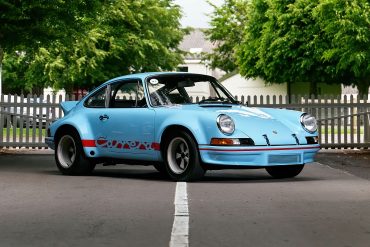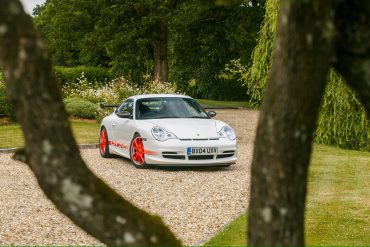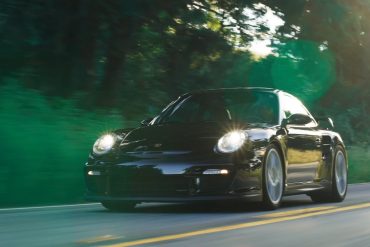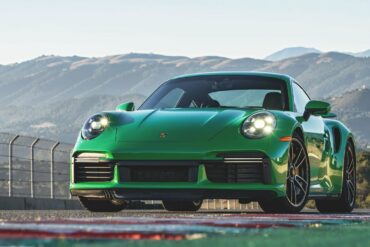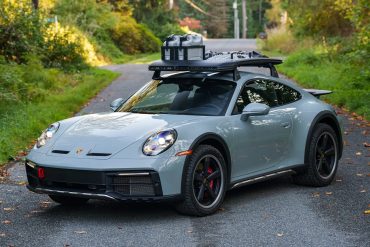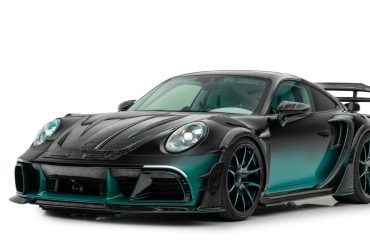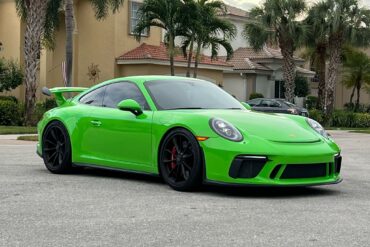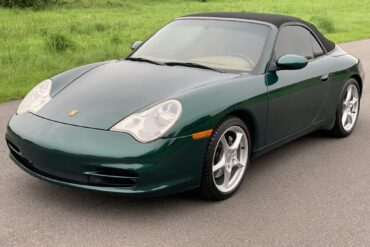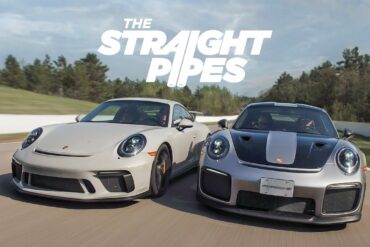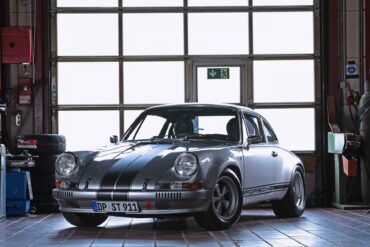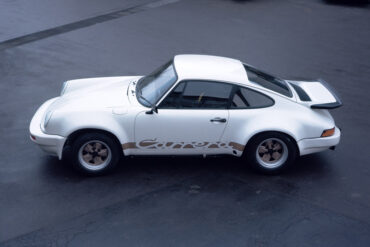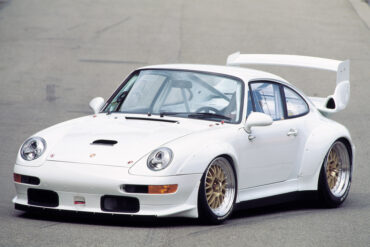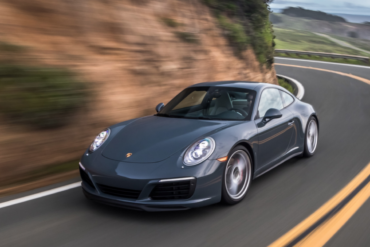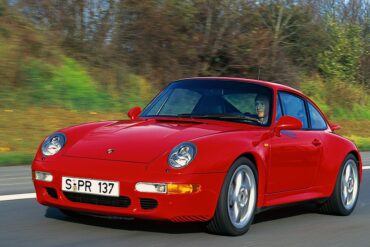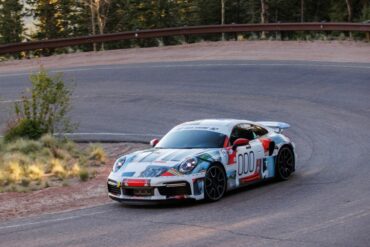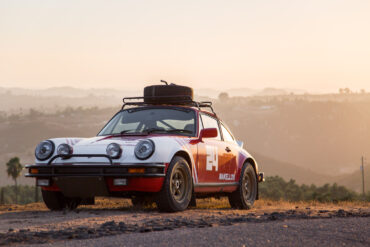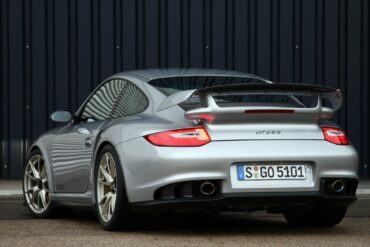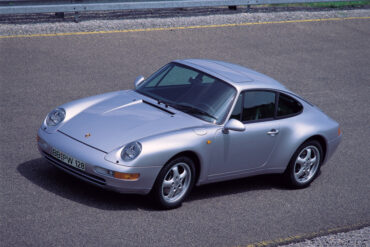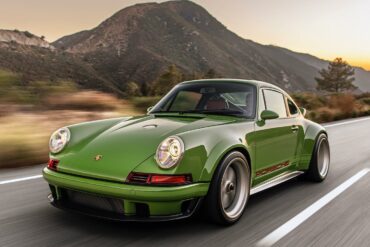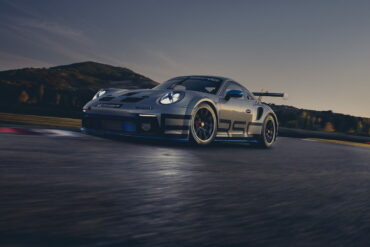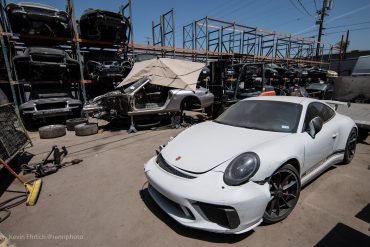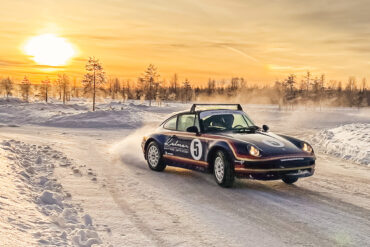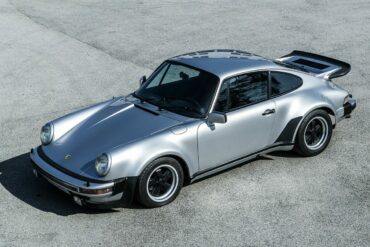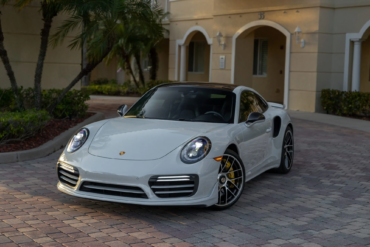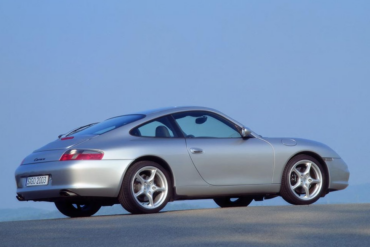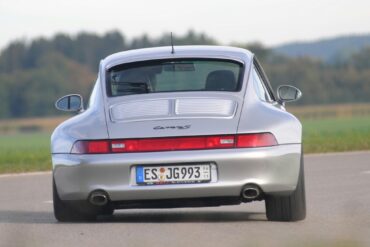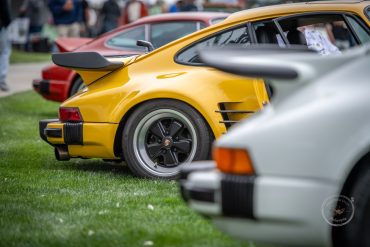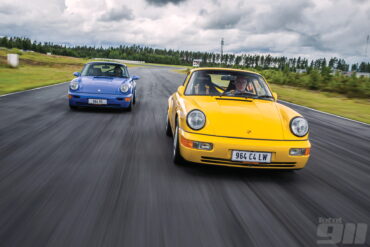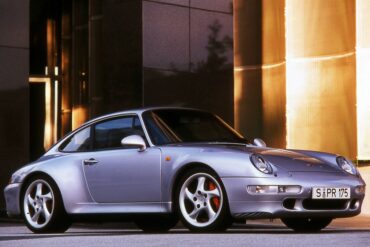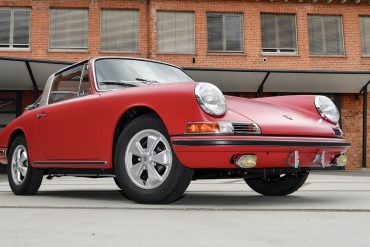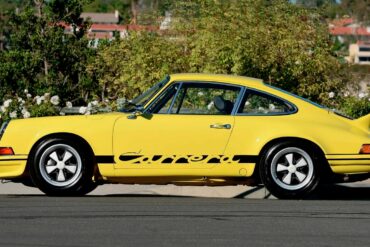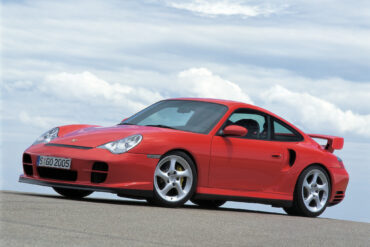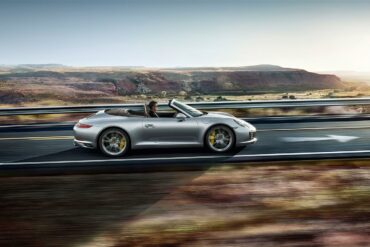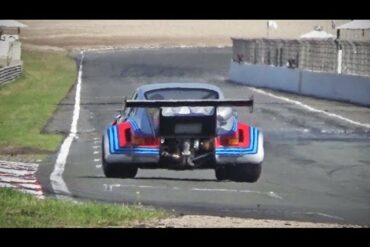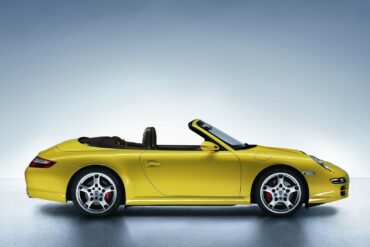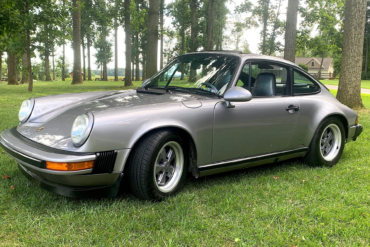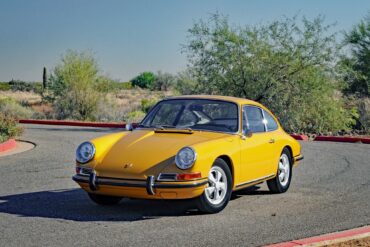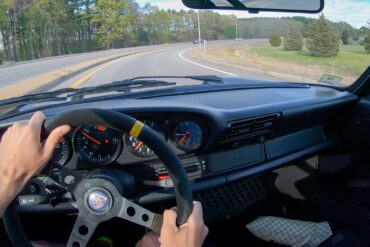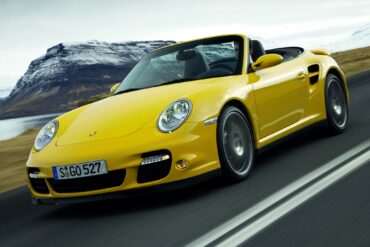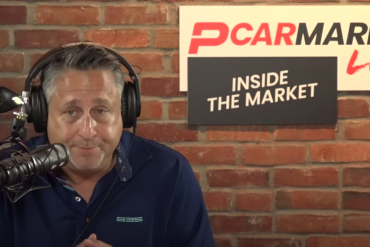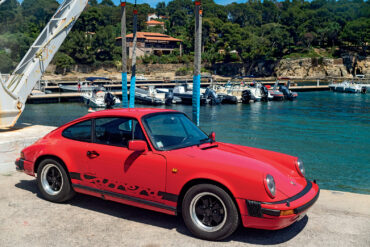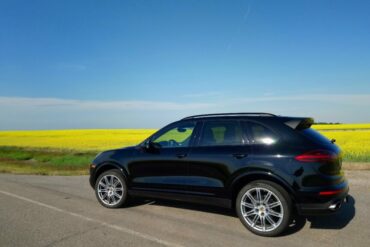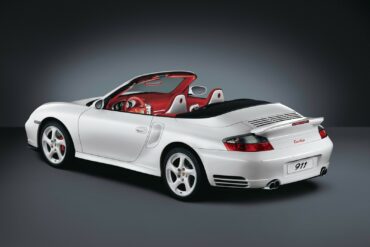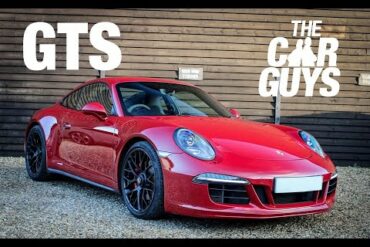2009 Porsche 911 GT3 (997) Technical Specifications Engine Type Flat 6 Induction Normally-aspirated Cooling Water-cooled Valvetrain Double overhead camshafts Injection Port...
Porsche 911
All
- Porsche 912
- 911 Carrera RS 2.7
- Porsche 901 (911)
- Porsche 911 (F-Series)
- Porsche 911 (991)
- Porsche 911 (G-Series)
- Porsche 911 (964)
- Porsche 911 (993)
- Porsche 911 (996)
- Porsche 911 (997)
- 911 Speedster Concept
- Porsche 911 (992)
- 964 Carrera 2
- 964 Carrera 4
- ’30 Jahre’ Anniversary
- 964 Speedster
- 964 Turbo
- 964 Carrera RS
- 964 Carrera Cup
- 964 RSR
- 993 Carrera
- 993 Carrera 4
- 911 Edition 50
- 993 Carrera 4S
- 911 2.0 Bertone Roadster
- 993 Carrera S
- 993 Targa
- 992 Sport Classic
- 993 Turbo
- 996 Carrera
- 993 Carrera RS
- 992 America Edition 911
- 996 Carrera 4
- 993 GT2
- 996 Targa
- 993 Carrera Cup
- 996 Carrera 4S
- 996 Turbo
- 996 Turbo S
- 996 GT3
- 996 GT3 RS
- 996 GT2
- 996 GT3 Cup
- 996 GT3 R
- 996 GT3 RSR
- 997 Carrera
- 996 GT3 RS Race
- 997 Carrera S
- 997 Carrera 4
- 997 Carrera 4S
- 997 Targa
- 911 Carrera 3.0 Coupe (G-Series)
- 997 Targa 4S
- 997 Turbo
- 997 Turbo S
- 997 GT2
- 992 Carrera T
- 997 GT2 RS
- 997 Speedster
- 997 Carrera GTS
- 992 Dakar
- 997 Carrera 4 GTS
- 997 GT3 Cup
- 997 GT3 R
- 997 GT3 RSR
- 997 GT3
- 997 GT3 RS
- 997 GT3 R Hybrid
- 991 Carrera
- 991 Carrera 4
- 991 Carrera S
- 991 Carrera 4S
- 991 Targa 4
- 991 Targa 4S
- 991 Turbo
- 991 Turbo S
- 991 Carrera GTS
- 991 Carrera 4 GTS
- 991 Targa 4 GTS
- 991 911 R
- Porsche 992 GT2 RS
- 991 GT3
- 991 GT3 RS
- 991 GT2 RS
- 991 Speedster
- 991 GT3 R
- 991 GT3 Cup
- 991 RSR
- 991 Carrera T
- 992 Carrera 2
- 992 Carrera 4
- 992 Carrera S
- 992 Carrera 4S
- 992 Targa 4
- 992 RSR
- 992 Targa 4S
- 992 Carrera GTS
- 992 Carrera 4 GTS
- 992 Targa 4 GTS
- 992 Turbo
- 992 GT3 R
- 992 Turbo S
- 992 GT3
- 992 GT3 Touring
- 992 911 S/T
- 911 (G-Series)
- 992 GT3 RS
- 992 GT2 RS
- 992 GT3 Cup
- 911 Carrera 3.0 (G-Series)
- 911 S (G-Series)
- 911 Carrera RSR 2.8
- 911 SC (G-Series)
- Porsche 992 GT3 R Rennsport
- 911 S/T
- 911 Carrera 3.2 (G-Series)
- 911 (Base Model)
- 911 Turbo (930)
- 911 SC Safari
- 911 L
- 911 Carrera RSR Turbo 2.1
- 911 T
- 911 Carrera RSR 3.0
- 911 E
- 911 S
- 911 SC San Remo
- 911 Carrera 3.2 Clubsport
- 911 R
- Porsche 953
- 911 Carrera RS 3.0
- 911 T/R
- 911 Carrera 25th Anniversary
- 911 SC RS
- 911 Turbo LE
- 911 Carrera Commemorative
- 911 Carrera 2.7 (G-Series)
- 911 3.2 Speedster
- 911 Turbo 2.7
- 964 Turbo S
Collecting Cars is currently offering a low mileage example of a 2004 Porsche 911 Turbo equipped with the optional X50 Performance...
The Kaege Retro Turbo is based on a Porsche 993 Turbo. It offers all-wheel drive and more than 450 hp!...
1989 Porsche 911 Speedster Pictures & Gallery...
2014 – 2016 Porsche 911 Turbo (991) Pictures & Gallery ...
2006 Porsche 911 Carrera S Club Coupe (997) Technical Specifications Engine Type Flat 6 Induction Normally-aspirated Cooling Water-cooled Valvetrain Double...
There are only a few annual auctions that have built the reputation of having prestigious and quality lot as Bonhams,...
The 992 GT3 becomes the seventh iteration of one of Porsche’s most established and beloved automobiles and it continues to...
This story covers the development of the Porsche 911 RS/RSR prototype in the middle of 1972. Surprisingly, the very first...
1999 Porsche 911 Carrera Cabriolet (996) Technical Specifications Engine Type Flat 6 Induction Normally-aspirated Cooling Water-cooled Valvetrain Double overhead camshafts...
1972 – 1973 Porsche 911 S Targa 2.4 (LWB) Technical Specifications Induction Normally-aspirated Cooling Air/oil-cooled Valvetrain Single overhead camshaft Injection...
The 2023 992 Carrera T is Porsche’s model for those that want nothing more than a sports car that wants,...
In tribute to the iconic 1973 911 Carrera RS, Porsche applied a similar strategy to craft a lightweight version of...
Porsche 911 (964) Technical Specifications & Model Comparison (European Variants) European specs 911 964...
PCarMarket is currently auctioning a 2017 Porsche 991.2 Carrera S painted in Sapphire Blue Metallic over a black leather interior....
996 Carrera Depreciation and Buying Guide Buying a Porsche 911 996? Then this is the video to watch. In this depreciation...
Porsche 911 Type 964 Carrera 2 'Works Turbo Look' Cabriolet was a special model in the 964 lineup. It gave buyers of the Carrera 2 Cab the great wide look of the Turbo cars and the Carrera 2 engine. The model was available as a 1992 and 1993 model year car (while some argue it was also available for a while in 1994). You get body shape of the 964 Turbo 3.3 without the huge rear spoiler. But this was more than just a design exercise, because the the Turbo-Look models also got the chassis and braking system from the Turbo 3.3 too.
Hambach Castle is one of the many highlights of this year’s Porsche Heritage Experience cultural format organized by the Porsche...
DriveTribe Reviews the 997 GT3 RS Richard Hammond has always been a Porsche guy, but there is one generation of...
For many Porsche enthusiasts, the name Emma Raducanu isn’t familiar. But if there’s one thing she shares with the world...
Ferrari F355 vs Porsche 911 Turbo (993) Ferrari F355 F1 vs Porsche 911 Turbo (993) with Engine Kit 430 HP...
1995 – 1996 Porsche 911 GT2 (993) Technical Specifications Type Racing Car Built At Germany Engine Flat-6 Position Rear Longitudinal...
Despite not being designed for high-speed runs, the 992 GT3 RS can impressively achieve remarkable speeds in a straight line,...
Note: All images in this article have been provided by Hoonigan Racing and are either official renders or actual pictures...
2007 Porsche 911 GT3 RSR (997) Technical Specifications Type Racing Car Built at Weissach, Germany Engine Aluminum Water-Cooled Boxer-6 w/Dry...
Top Speed In a Porsche 911 GTS German correspondent Thomas Hellmanzik gets his first 911 driving experience, and promptly hits...
The replacement for the SC series came in 1984 as the 911 3.2 Carrera, reviving the Carrera name for the first time since 1977. This was the last iteration in the original 911 series, with all subsequent models featuring new body styling and new brake, electronic, and suspension technologies. Almost the same galvanised body as the SC. Engine was claimed to be 80 per cent new, and the first production 911 to feature an ECU to control the ignition and fuel systems.
Porsche 911 (991) Engine Codes There are more versions of the 991 Carrera than you can shake a stick at!...
(2016-2018) Porsche 911 GT3 Cup (991.1) Technical Specifications Powering the new 911 GT3 R is a cutting-edge four-litre flat-six unit...
2010 Porsche 911 Carrera 4 Coupe (997.2) Technical Specifications Engine Type Flat 6 Induction Normally-aspirated Cooling Water-cooled Valvetrain Double overhead camshafts...
Experience the thrill of driving with this stunning 2010 Porsche 911 GT3, powered by a 3.8-liter flat-six engine with a...
2016 Porsche 911 Carrera S Cabriolet (991.2) Technical Specifications Engine Engine layout Rear Engine Engine type Boxer, twin-turbo Cylinders 6 Valves...
Photos & Technical Details: Flat 6 Motorsports. Do you have an interesting Porsche build that you want to show off?...
In 1984, a Porsche was purchased in Illinois and upgraded to RUF BTR specification. The modifications included increasing the engine...
The newest 911 GT3 RS is the complete package: gorgeous design, lightweight body, the most advanced aerodynamics, with impeccable performance...
Porsche Option Codes – Porsche 911 (1998 Model Year) Looking to decode your 1998 Porsche 911 option codes? Want to...
Porsche 911 Sales Brochures (Type 991) We found quite a few Porsche sales brochures for the Type 991 911 generation....
Porsche 911 Carrera RS 2.7 1973 Porsche 911 Carrera RS 2.7 Engine: 2,687 cc, air-cooled horizontally flat six Production dates:...
Awesome Acceleration & Top Speed Runs in a 992 4S Multiple top speed runs on the Autobahn by our favorite...
Last weekend, the ‘Fuori Concorso’ was staged on the western shore of Lake Como for the fifth time now. This...
Built to homologate the 2011 GT3 RSR racecar, the RS 4.0 is fitted with the 3996cc engine which raises power output...
The Porsche 911E continued as the midrange 911 for the 1970 and 1971 model years, fitting between the contemporaneous 2.2L 911T and the 2.2L 911S. It produced 155 bhp and featured all the upgrades that came with C-Series production including longer wheelbase, Fuchs alloy wheels. Both the E and S model 911 had an aluminium engine-lid and aluminium bumpers. The 911 E 2.2 was once again available as either a Coupe or Targa body. For model year 1972, the 2.2L 911E was replaced by the 2.4L 911E.
Doug Demuro Drives the 996 GT2 The 996 Porsche 911 GT2 is my favorite 911 — and today I’m going...
2016 – 2019 Porsche 911 Targa 4 (991.2) Pictures & Gallery...
Unlike its Boxster brother, the S version of the mid-engined Porsche roadster offered a 3.4-liter unit from its predecessor, but...
2011 Porsche 911 GT3 R Hybrid 2.0 (997) Technical Specifications Engine Configuration B6 Location Rear, longitudinally mounted Construction aluminium block...
The American Roadster is essentially a turbo-bodied Carrera Cabriolet with Turbo suspension and brakes. Like the 356 America Roadster it was named after, the Type 964 America Roadster was a limited-edition, driver-focused convertible destined for the American market. Production for the America Roadster was limited at only 250 examples, and the model was only produced in 1992 and 1993. Its engine was a standard unit making 250 horsepower, but the special edition had the wide fender flares, suspension, brakes, and 17-inch Porsche Cup wheels of the 911 Turbo.
2020 – Present Porsche 911 Carrera S Cabriolet (992) Pictures & Gallery...
Petrol Pod tries out the Porsche 911 (992) GT3 Touring and used it to do normal every tasks to see...
2004 Porsche 911 Carrera 4S Coupe (996) Technical Specifications Engine Type Flat 6 Induction Normally-aspirated Cooling Water-cooled Valvetrain Double overhead...
More than a Carrera 2.7 RS The Carrera RS was introduced in 1973 and homologated for Group 4 GT racing,...
Launched in October of 2003, the 996 911 GT3 RS is an extremely sporty model with the power and purist...
The 992 GT3 embodies the essence of the iconic 911, merging all the hallmarks of the brand into an exceptional...
The 997 GT2 debuted in late 2007 as a 2008 model. Its 3.6-liter flat-six engine, featuring variable geometry turbochargers and...
Pro driver Randy Pobst from MotorTrend gets behind the wheels of a 2021 Porsche 911 Turbo S to see how...
Unveiled at the 2022 Los Angeles Auto Show, the 911 Dakar pays tribute to the Porsche 953’s triumphant victory in...
For almost 50 years, the Porsche 911 Turbo as a classic Coupé (and for more than 20 years in the...
This 991.2-generation Porsche 911 GT3 available for auction on PCarMarket possesses a number of desirable features, chief amongst is its...
Episode Three: The Porsche 911 T, 911 L, & 911 S Summary Welcome to The Audiobahn, the Stuttcars.com podcast focused on...
2002 Porsche 911 Carrera 4 Cabriolet (996.2) Technical Specifications Engine Type Flat 6 Induction Normally-aspirated Cooling Water-cooled Valvetrain Double overhead...
On Track With Porsche’s Best 2018 Porsche GT2 RS, Porsche GT3, Porsche 911T, 718 Cayman GTS, and 718 Boxster GTS....
A Restomod Taking Inspiration from the Porsche 911 S/T You guys already know we’re huge fans of DP Motorsport thanks...
Following the famous 1973 F-model 911 Carrera RS 2.7, Porsche built its successor based on the G-model and it was called the 911 Carrera RS 3.0. With its 172 kW engine, it was the most powerful series production street-legal Porsche made so far. With its new 3.0-liter engine, featuring mechanical fuel injection, it was capable of 230 hp. While 1,580 Carrera RS 2.7s were built for 1973, only 56 Carrera RS 3.0s were built for 1974.
What has 777 horsepower, twin turbos, and a waitlist longer than the distance from here to the moon? Ah yes,...
The Porsche 911 GT2 Evo represented the top specification ever produced for any air-cooled Porsche. Designed to compete in FIA GT1, it incorporated a twin turbocharged 3.6L flat-6 engine rated at a full 600 HP and 491 lb-ft of torque. As compared to the standard 993 GT2, Porsche widened the rear fender extensions to cover wider modular wheels and added a new front spoiler with inlets for oil and brake cooling. A second deck appeared on the already outlandish rear spoiler, which could be mounted higher in the air stream for added downforce. Approximately 11 samples were produced.
The new downsized flat-six gets forced induction, more power and greater efficiency, just like in the basic refreshed 911 Carrera, this time mated to a four-wheel-drive system nicked wholesale from the Turbo. Apparently one in three 911 buyers opt for a four-wheel-drive variant, so this is an important car to get right. The 3.0-liter twin-turbo flat-six in the 911 Carrera 4S is good for 414hp and 368 ft lbs of torque, helping it get from 0 to 62 mph in 4.2 sec with a manual, 4.0 seconds with the PDK and 3.6 sec with the PDK and optional Sport Chrono pack.
Porsche Option Codes – Porsche 911 (1998 Model Year) Looking to decode your 1998 Porsche 911 option codes? Want to...
Pikes Peak is a mountain in Colorado where the annual Race to the Clouds is held. Watch as the Porsche...
Porsche’s 911 lineup boasts an impressive array of choices, catering to a wide spectrum of driving preferences. Whether you seek...
A True Head Turner We included a car from Makellos Classics in a list of our favorite Porsche custom cars...
2011 Porsche 911 GT2 RS (997) Technical Specifications Engine Type Flat 6 Induction Twin-turbocharged Cooling Water-cooled Valvetrain Double overhead camshafts Injection Port...
Introduced in late 1994 the standard 911 Carrera of the 993 generation was fitted with a development of the M64 3.6-liter flat six that had been found in the prior 964 generation. With a redesigned exhaust system and new hydraulic lifters, the engine produced 272 horsepower. For the 1996 model year, a Targa variant was introduced, and a variable intake runner system (called VarioRam) was added to the entire Carrera lineup, bumping horsepower to 285. Approximately 23,000 coupes were built, 15,500 cabriolets, and 4,500 Targa's, in both manual and automatic (Tiptronic) transmission. Overlapping with the last year of production, it was replaced by the 911 Carrera of the 996 generation for model year 1998.
Singer Vehicle Design – Unico Commission Today, we take a closer look at the Singer Vehicle Designs Unico Commission. The...
2021 – Present Porsche 911 GT3 Cup (992) Pictures & Gallery ...
Porsche design cues trace their origins to a sawmill in Gmünd, Austria where the first hand-crafted sportscars bearing the family...
Prepare to be spoiled at Kalmar events Travelling to the capital of Lapland, right on the Arctic Circle, specially prepared...
The 911 Turbo was put into production in 1975. While the original purpose of the 911 Turbo was to gain homologation for the 1976 racing season, it quickly became popular among car enthusiasts. Ernst Fuhrmann adapted the turbo-technology originally developed for the 917/30 CAN-AM car and applied it to the 3.0 litre flat-six used in the Carrera RS 3.0, thus creating what Porsche internally dubbed as the 930. Total power output from the engine was 260 bhp and 254 ft lbs of torque.
Bring A Trailer is currently offering a low mileage example of a 2019 Porsche 911 Turbo S Coupe finished in...
2003 Porsche 911 Carrera Coupe (996.2) Technical Specifications Engine Type Flat 6 Induction Normally-aspirated Cooling Water-cooled Valvetrain Double overhead camshafts...
1998 Porsche 911 Carrera S (993) Technical Specifications Engine Type Flat 6 Induction Naturally Aspirated Cooling Air/oil-cooled Valvetrain Single overhead...
The 9th annual Werks Reunion Monterey, held by the Porsche Club of America, took place for the second year in...
Rare & Special Race Versions of the 964 For issue 131 of Total 911, you may remember that we made...
1996 Porsche 911 Carrera 4S (993) Technical Specifications Engine Type Flat 6 Induction Naturally Aspirated Cooling Air/oil-cooled Valvetrain Single overhead...
They might have access to original bodywork methods, tools, parts and the company archive. But the most valuable thing is...
In less than two weeks Monterey 2022 will start and one of the main attractions is a 1973 Porsche 911...
The Porsche 911 GT2 combines the sporting character of the 996 911 GT3 with the power and straight line performance of the...
2016 – 2019 Porsche 911 Carrera S Cabriolet (991.2) Pictures & Gallery...
Carrera RSR Turbo On Track Fun At this year’s Historic Grand Prix I was lucky enough to capture this 1974...
2008 Porsche 911 Carrera S Cabriolet (997) Technical Specifications Engine Type Flat 6 Induction Normally-aspirated Cooling Water-cooled Valvetrain Double overhead...
In 1988, Porsche unveiled the “Commemorative Edition” Carrera (also called the Jubilee Edition) to celebration the 250,000th 911. Porsche built...
Ruf’s follow-up to the iconic “Yellowbird” debuted in 1995, based on the new 993 Turbo chassis. Maintaining the original’s themes...
1967 – 1969 Porsche 911 S Coupe 2.0 (SWB & LWB) Pictures & Gallery...
911 3.2 Carrera POV Run Onramps and Highway driving in my Aircooled 1988 Porsche 911 3.2 Carrera. Be sure to...
Like the 911 Turbo Coupe, the 997 Turbo Cabriolet is powered by a 3.6 liter six-cylinder boxer engine with biturbo turbocharging and Variable Turbine Geometry (VTG). The powerplant already generates 480 hp (473 bhp) and 460 ft lbs of torque at 1950 rpm. The manual transmission version can accelerate from 0 to 100 km/h in just four seconds while the Tiptronic S the time can be cut to 3.6 seconds. Top speed for the Cab is the same 193 mph as Coupe and only weighs 70 kilos.
Porsche 911 GT3 (991.2) Manual Fun On this Special episode James and Thomas take a spin in the legendary Porsche...
Current Porsche 992 Market and A Deep Dive into the Crazy Secondary Market Pricing If you are looking to buy...
1976 – 1977 Porsche 911 Carrera 3.0 Technical Specifications Type 2+2 FHC Number of doors 2 Engine 3.0 L Aircooled...
Porsche just unveiled their most powerful 911 yet and it is just insane! Equipped with a twin-turbo flat-six engine that yields 700-horsepower...
2003 Porsche 911 Turbo Cabriolet (996) Technical Specifications Engine Type Flat 6 Induction Twin-turbocharged Cooling Water-cooled Valvetrain Double overhead camshafts...
The Porsche 911 GTS (991.1) Review Jason continues his quest to find the best modern Porsche 911 for all occasions....


